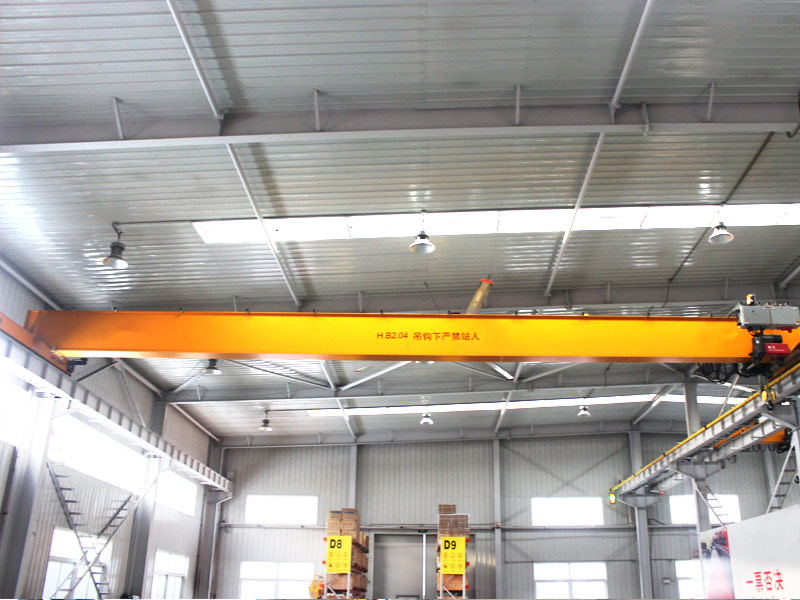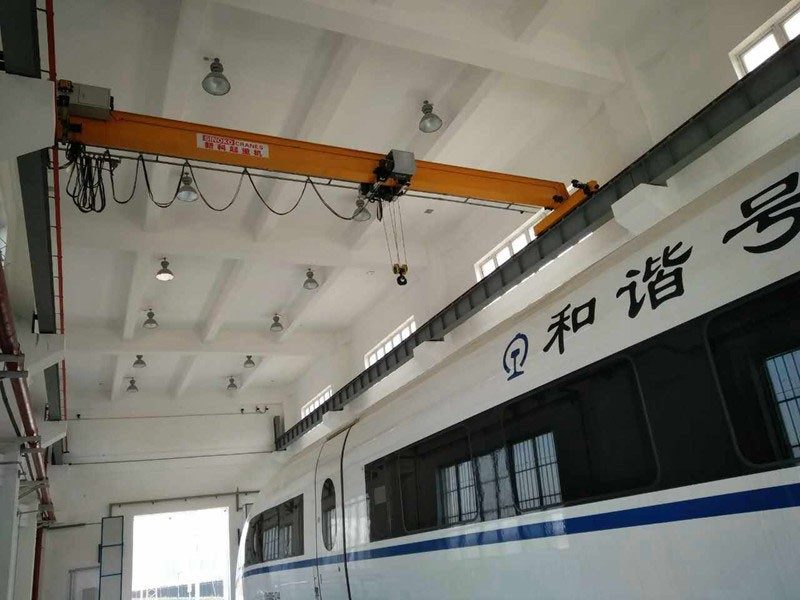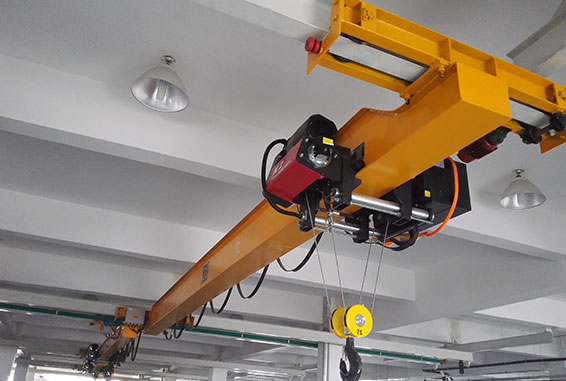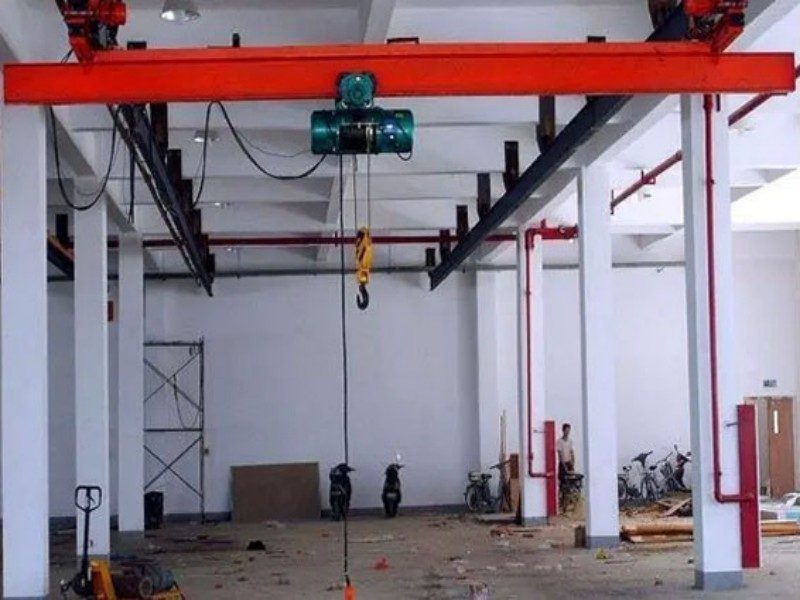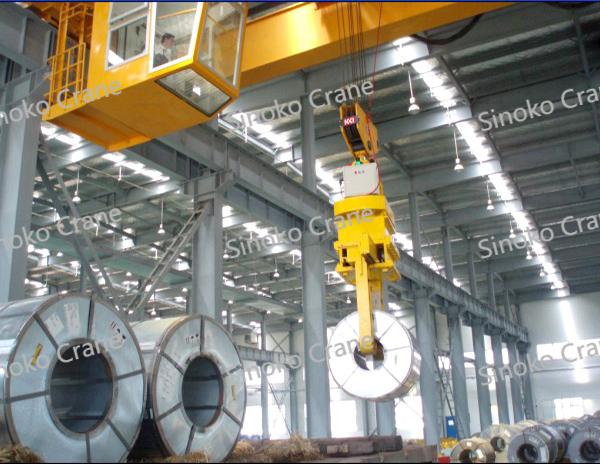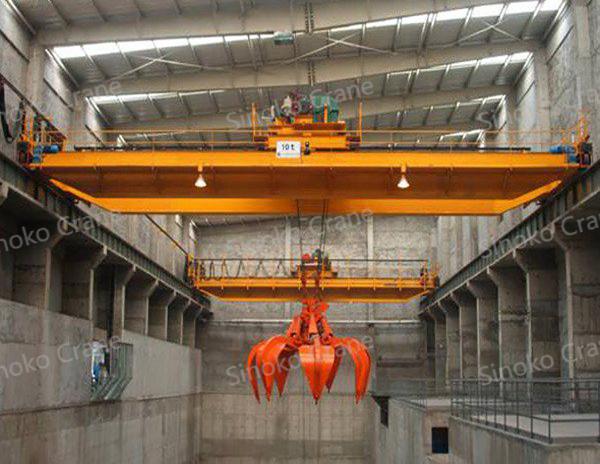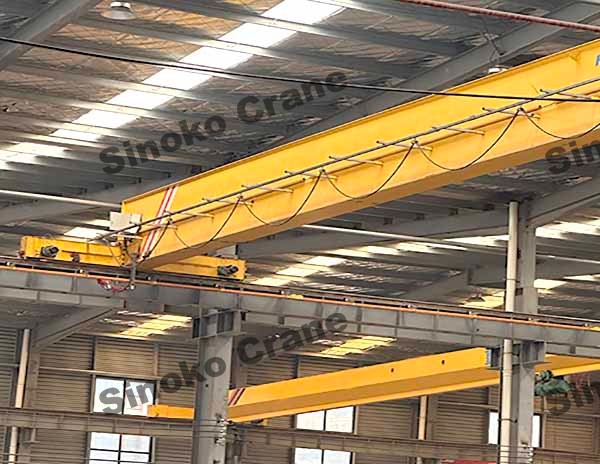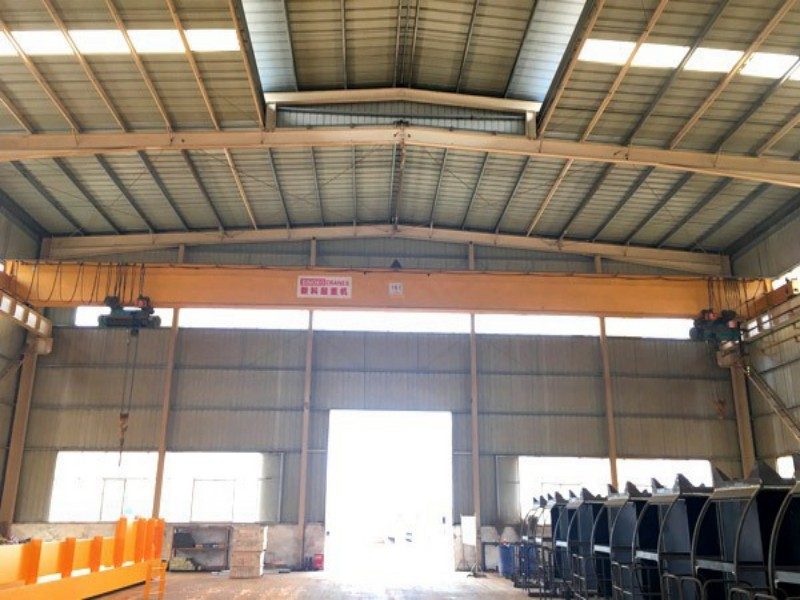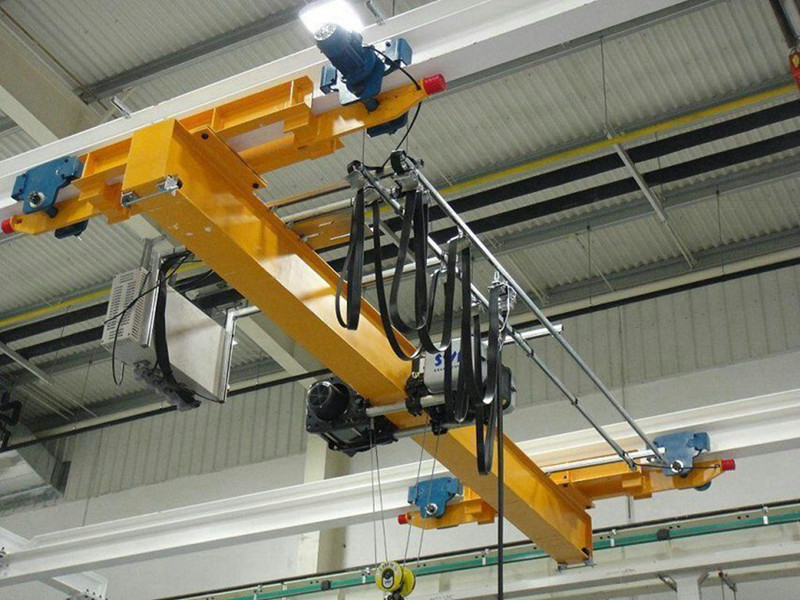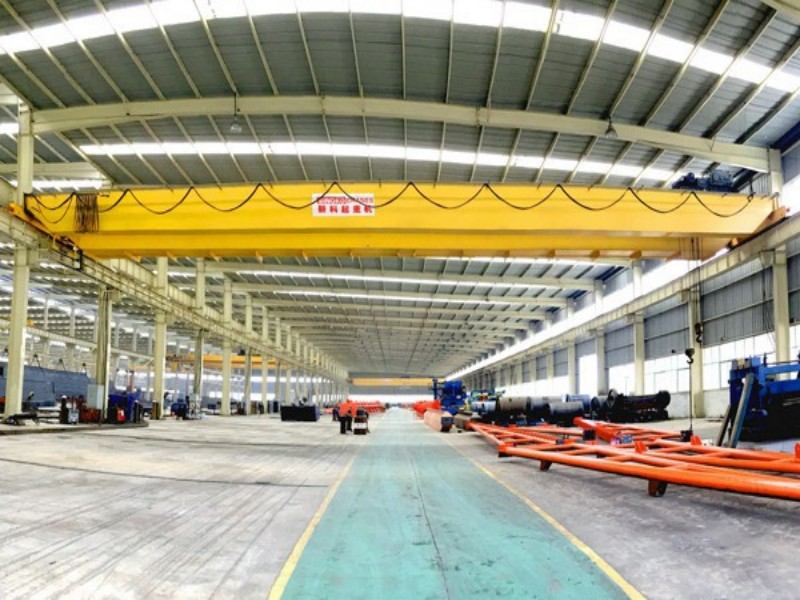Overview
Overhead cranes are lifting devices that are used to lift materials over the workshops, warehouses and stockyards. Because its two ends are located on tall concrete pillars or metal brackets, it looks like a bridge. The bridge cranes bridge runs along the rails laid on both sides of the elevated bridge, which can make full use of the space under the bridge to lift materials and is not obstructed by the ground equipment. It is the most widely used material lifting appliances.
The soft start motor driven material handling bridge crane uses variable-frequency technology, run with heavy load at low and high speed. The adjustable speed ranges from 1:10, which ensures crane run steadily and reduces impact on factory building. Combination of swing-proof technology achieves a high accuracy position of lifting items.
Type of Material Handling Overhead Crane
Single Girder Cranes: As you mentioned, these cranes consist of one bridge girder supported by two end trucks. They are generally used for light to moderate lifting tasks. Their design makes them more cost-effective and easier to install and operate than some other crane types.
Double Girder Cranes: These cranes have two bridge girders and two end trucks. They are typically used for heavier lifting tasks, as they are more efficient and durable than single girder cranes. They can also accommodate larger hooks and hoists, which can be beneficial for certain applications.
Top Running Cranes: These are the most common type of overhead crane. They are designed to run on a rail installed on top of the runway beam, allowing them to lift heavier loads than underhung cranes. They can handle several hundred tons and offer larger spans and higher lifting heights.
Underhung Cranes: These cranes are hung from the ceiling or roof structure, allowing for better utilization of space. They provide excellent side approach and maximize the width and height of the building. Underhung cranes are typically used for lighter loads and are often found in smaller factories and workshops.
Features
Customized services: Tailor-made, meeting customers specific demands all over the world.
Standard world-renowed brands: SEW,ABM three-in-one motor, Schneider Electric parts.
Long using life: Working duty up to A6, light weight, smart feature structure, low failure rate.
Specification
| Capacity: | 1 ton~ 500 ton |
| Lift height | 9m to 40m |
| Span: | Max. to 65m |
| Duty class: | A7, A8 |
| Power supply: | 380V, 50Hz, 3-phase AC |
Sinoko Material Handling Bridge Cranes use of stepless variable frequency motors can make their movement smoother and more stable, and the compact design can save space. The improved lifting speed is also a significant advantage.
CASE
Browse real-world project cases to see how Sinoko's soft-start motor-driven cranes improve safety, reliability, and handling efficiency across various industries.
32T Steel Coil Handling Crane Project Case
Sinoko Crane with years of experience in crane manufacturing and design, the steel coil handling crane has helped customers reduce costs and improve the efficiency of steel coil transportation.
Learn More Get a QuoteInstallation of QZ-Type Grab Bucket Bridge Crane Project Case
The Sinoko QZ-Type Grab Bucket Bridge Crane was specially designed for a Brazilian client as a grab bucket crane, which significantly improved the client's work efficiency and received unanimous praise from the client.
Learn More Get a Quote3× 5T European-Style Single-Girder Cranes for Kenyan Sugar Refinery
Sinoko cranes has designed three 5-ton bridge cranes for Kenyan customers, which have solved their problems. Come and contact Sinoko cranes to solve your lifting problems.
Learn More Get a QuoteFAQs
“Soft‑start” refers to technology that gradually ramps up motor voltage during startup, reducing inrush current and mechanical shock. This ensures smoother acceleration, less stress on drive components, and longer service life compared to traditional direct-on-line starters.
By controlling startup current and torque, the soft‑start reduces wear on motors, gearboxes, brakes, and structural parts. It also lowers electrical stress on the supply network, contributing to quieter operation and reduced maintenance needs .
Soft‑start devices provide a simpler and quieter beginning and end to motion, ideal for frequent start‑stop cycles. They don’t offer variable frequency control like VFDs, but in lighter-duty scenarios, they deliver smooth launches without complexity. VFDs, while more flexible, may not always be necessary depending on usage patterns .
Yes, advanced soft‑start units often incorporate features like overload protection, phase-loss detection, overheat protection, and thyristor-based fault isolation. These safeguards help secure both the equipment and the power supply during abnormal conditions.
Soft‑start cranes are particularly effective where frequent short starts are required, such as in repetitive material handling tasks within workshops or assembly areas. They provide reliable, low-impact control without the complexity or cost of more advanced drives.
Soft‑start reduces electrical and mechanical shocks, extending component lifespan and reducing unscheduled downtime. It also helps avoid costly repairs and improves uptime, making it a cost-effective solution for medium-duty applications where smooth, reliable functionality is needed .
Related Products
Sinoko offers a wide range of bridge cranes—from single girder to double girder, manual to motorized, and variable speed to soft-start—designed to meet diverse lifting needs across different industries.
Single Girder Overhead Crane
Henan Sinoko Cranes is a complete source of top quality single girder overhead cranes manufacturer with standard specifications. Find here single girder overhead cranes with competitive price.
Learn More Get a QuoteSingle Girder Underslung Crane
Single Girder Underslung Crane are very smart. Easy installed on traveling H beam. Saving the workshop room clearance. Get free quote.
Learn More Get a Quotecxtd double girder crane
Maximize efficiency with our European Double Girder Overhead Crane. Perfect for heavy-duty lifting. Contact us for a custom solution today!
Learn More Get a Quote












